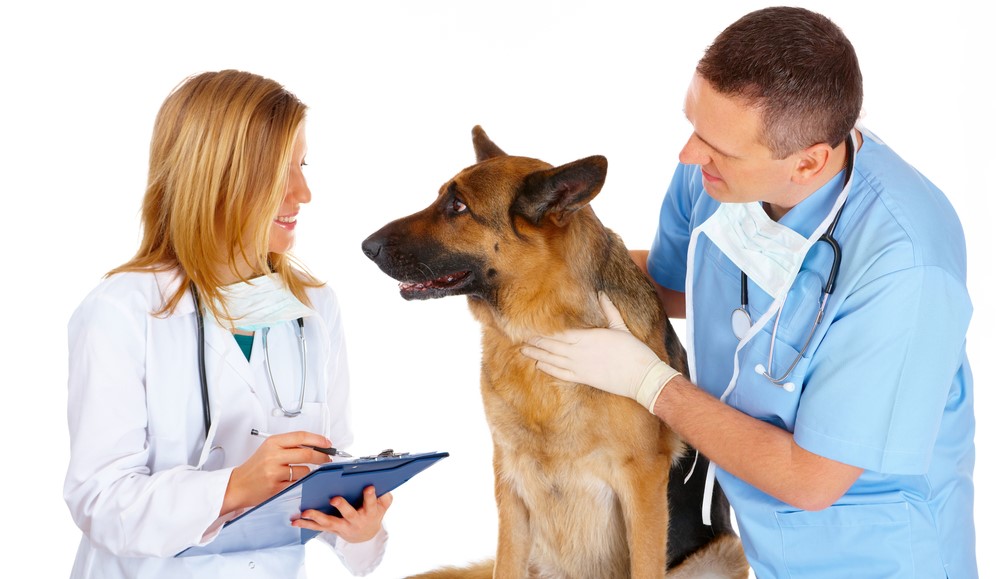What is Methocarbamol for dogs?
In fact, since you’re here, it’s probably because they prescribed it to your pet and you want to know just what it is you’re getting into.
To put it in its simplest terms, methocarbamol is a muscle-relaxant or anti-inflammatory that has been approved by the FDA as being safe for both dogs and cats.
It’s quite a potent little drug and works by targeting the central nervous system to help control the impulses of the target muscle, similar to how many human muscle-relaxants work.
Prescribed only when truly necessary: Naturally, any drug working on the most critical portion of your pet’s body warrants some level of concern. The fact that it works across the entire body of your pet means that veterinarians are only likely to recommend the medication if your dog is in visible distress.
If they’re not in pain and they don’t have any visible injuries, then you probably don’t need to be using it.
Have a look at what Dr. Scott McKay has to say about this med:
However, if your pet has suffered from the following, it is generally advised to give this medication a try:
- an extreme injury that has directly led to the muscle spasm
- recent surgery that has introduced trauma to the affected area
- suffering from a chronic muscular illness like Myelopathy.
It not only controls the impulse of the muscle to reduce instances of twitching (which can help your dog sleep or rest comfortably), but it also works as a pain reliever by decreasing the inflammation of the muscles, which leads to less pressure on the nerve endings of your pet.
Should I give my dog Methocarbamol?
Well, as we mentioned earlier, you don’t have to. Your preferred veterinarian is going to be the one that will make that decision, one way or another, after getting all the information they need. If you’re not aware of any disease or injury plaguing your pet, then these are the initial steps you should take.
Watch your dog’s diet
Muscle spasms can sometimes emerge when dogs are allergic to ingredients in their food. Usually, these will be accompanied by symptoms like vomiting or loose stool, which will help you make a more definite decision.
Improve his or her water intake
Another potential cause of muscle spasms is dehydration that weakens the muscles and starts to interfere with their natural rhythm of contractions. Consider laying out more water for your pet and buying some canned food which is higher in moisture content until the problem is resolved.
If neither of these two tips helps fix the issue, then take them to a professional along with a list of the steps you’ve done to help your vet “troubleshoot” your dog.
What my veterinarian should know

Chances are that when you bring your dog into the vet for the first time with these symptoms, they’ll run him or her through their gamut of tests that will probably include X-rays to rule out any skeletal abnormalities.
Unless they find something though, they’re going to need a lot of supplementary information from you, so you need to be sure that you’re equipped to answer such questions.
Information your vet may ask of you: To diagnose your dog correctly, your vet will probably ask questions regarding your dog’s health history and general lifestyle. Here are some of the things you can keep ready to mention to them:
Your pet’s medical history:
- any genetic diseases
- previous medications.
Unusual symptoms your pet may be exhibiting:
- excessive scratching
- uncontrolled licking
- biting at himself – could indicate allergies
- limping
- whimpering
- any signs that your dog may be in pain.
Twitching and spasm information:
- when you first noticed it
- frequency
- are spasm symptoms increasing over time
- the intensity of the tremors.
General health questions:
- behavior during routine walks
- physical movement changes
- any gastric distress
- dietary changes
- urinary or bowel changes.
Dogs with a more in-depth medical history (which your vet has experience with) might involve more questions. However, once they have all this info, as well as what they gather from their tests, they should be in a good spot to make a decision/prescription.
Where can I buy Methocarbamol?
Fortunately, due to its potency, methocarbamol is only available on an as-needed basis, with a prescription from your veterinarian. This is why it’s so important to monitor your pet’s condition and try to solve it with other steps first.
These prescriptions can be given either under the generic name methocarbamol, or under the brand name of Robaxin, or Robaxin V. This is similar to how Tylenol is a brand of acetaminophen. They do exactly the same thing, so don’t freak out if you see a different name on your prescription to what you’d find online.
Methocarbamol dosage for dogs

Unless your vet has some concerns over how your dog will handle the medication (more on that below), they’ll tend to prescribe a minimum of 20 mg per pound of your pet, with more for severe cases (although note that even 30 mg would be considered a “heavy” prescription).
This first dose is usually stronger to get the ball rolling when it comes to pain relief, and then in most cases, it becomes less intense on subsequent days.
Dosing methods

So, you saw your vet and got the prescription, but what exactly are you getting when you go to get it filled out? Methocarbamol can be given to your in one of two ways:
- the far more popular and simple option is the pill
- the second, less common option in the injection.
Chances are, you’ll be getting some pills. If you’ve never done it before, the best way to administer them to your dog is to either hide it in their regular food (although this won’t always work for picky eaters) or to use a pill pocket treat and sneak it into your dog’s diet that way.
Injections, although easier to administer, are often only going to be used in cases where your pet is either refusing to take the pill despite your best efforts or is having trouble keeping it down after they swallow it.
However, this injection needs to be applied intravenously, so it will only be administered by your vet and isn’t an ideal solution for long-term use.
How long will my dog need it?
The length of use is a little more complicated. Barring a physical complication that would require surgery to fix the issue, your dog should experience improvements quite rapidly.
As long as they’re dosed appropriately, it’s not uncommon for pets to feel relief as of the first dose, and follow-ups every 8 hours or so (to be determined by your vet) ensure that they remain in good shape for the length of the prescription.
However, if they aren’t responding in the first few days, it might be a good idea to have another talk or visit with your vet. In some cases, they’ll tell you to discontinue using it, especially if your dog is beginning to experience the side effects of the pills with none of the benefits.
Side effects of Methocarbamol for dogs

As with any medication your dog might be prescribed, Methocarbamol does have side effects.
You’ll need to keep an eye on him/her initially to assess if they are sensitive to the ingredients in the drug. Assuming that your dog isn’t taking any other medications that could potentially clash with it, methocarbamol results in side-effects that fall into one of three categories:
- external physical symptoms
- internal physical symptoms
- behavioral symptoms.
External physical symptoms: Include anything that you can visibly see. These include vomiting or drooling. Vomiting is the most severe of these cases and should be monitored to make sure that they continue to eat their food while on the medication. Otherwise, you might need to ask your vet to consider the intravenous option.
Internal physical symptoms: Those that exist, but that you can’t see. The most common of these include weakness or a loss of coordination. This could result in things like:
- stumbling
- trouble using the stairs
- head tilt
- falling over for no reason.
Behavioral symptoms: Those that will typically only be noticed by people who are familiar with how their dog behaves on a daily basis. For example, lethargy is one of the key ones, but some people just happen to have lazy dogs.
Sleepiness is another common side-effect thanks to the sedative aspect of the medication. After all that twitching though, it can be nice to see your pet enjoying a well-deserved rest!
This is why it’s important that when your pet is on medication, and you can’t be there to tend to them, that you have someone who knows your dog well watch them for you.
Final say on this dog muscle-relaxant

Methocarbamol is a tricky little substance that isn’t understood all that well by both owners and medical professionals alike. Exactly how it works is still a mystery, but we know that sufferers of consistent muscle spasms more often than not find relief in its anti-inflammatory properties.
In this article, we presented you with a comprehensive guide to the medication where you learned what it is, how to get it, and how to dose your dog with it. You’re now well-armed with the knowledge you need to discuss its potential implications intelligently with your veterinarian.
Just remember that, as with all medications, be sure to ask your vet before mixing them. Also to track their progress and side-effects daily, to know if it’s worth it to continue using it. Chances are those pills don’t taste very good, so you don’t want your pet going to all that trouble for nothing!
